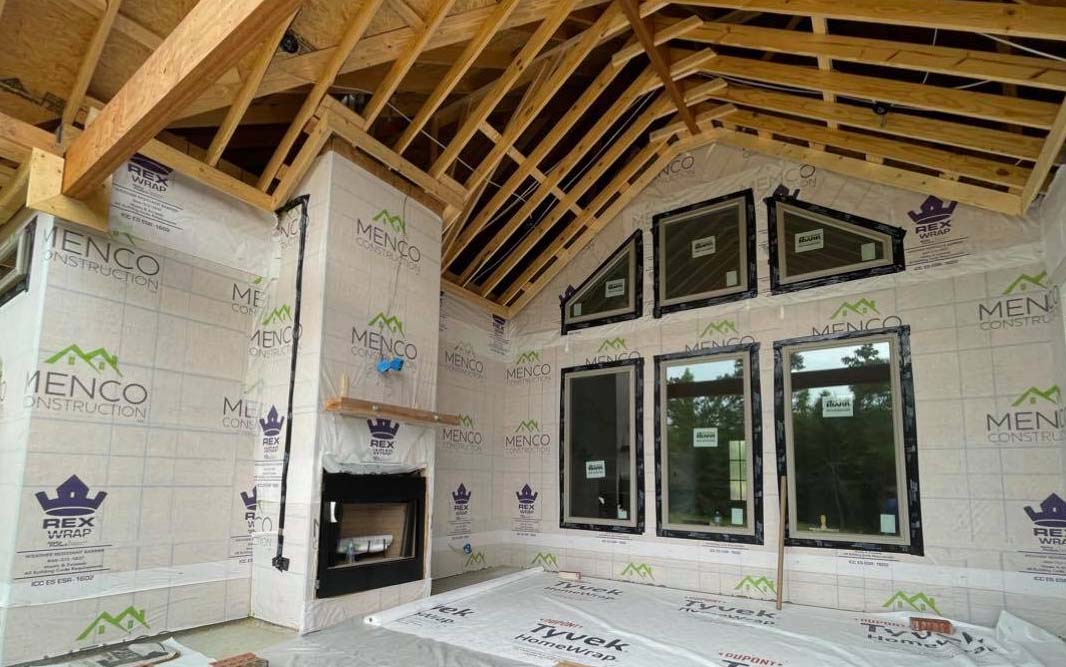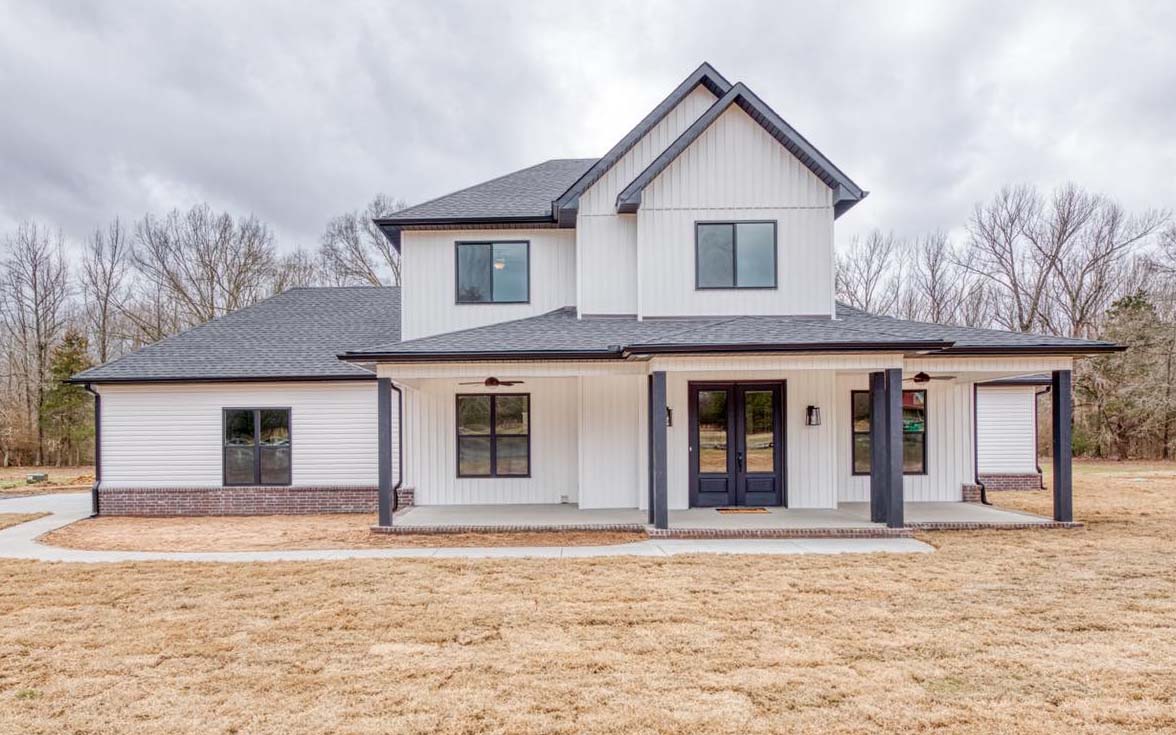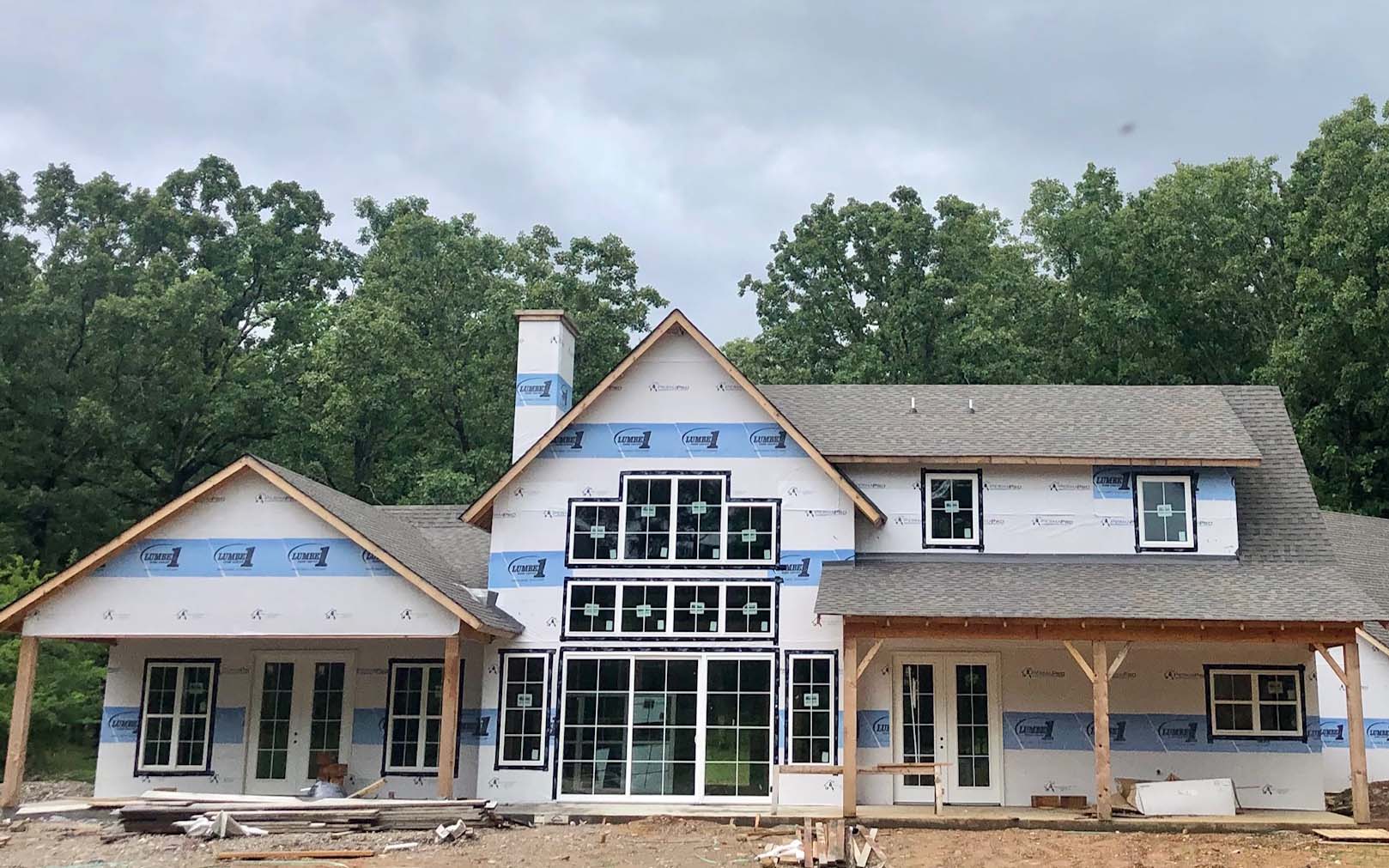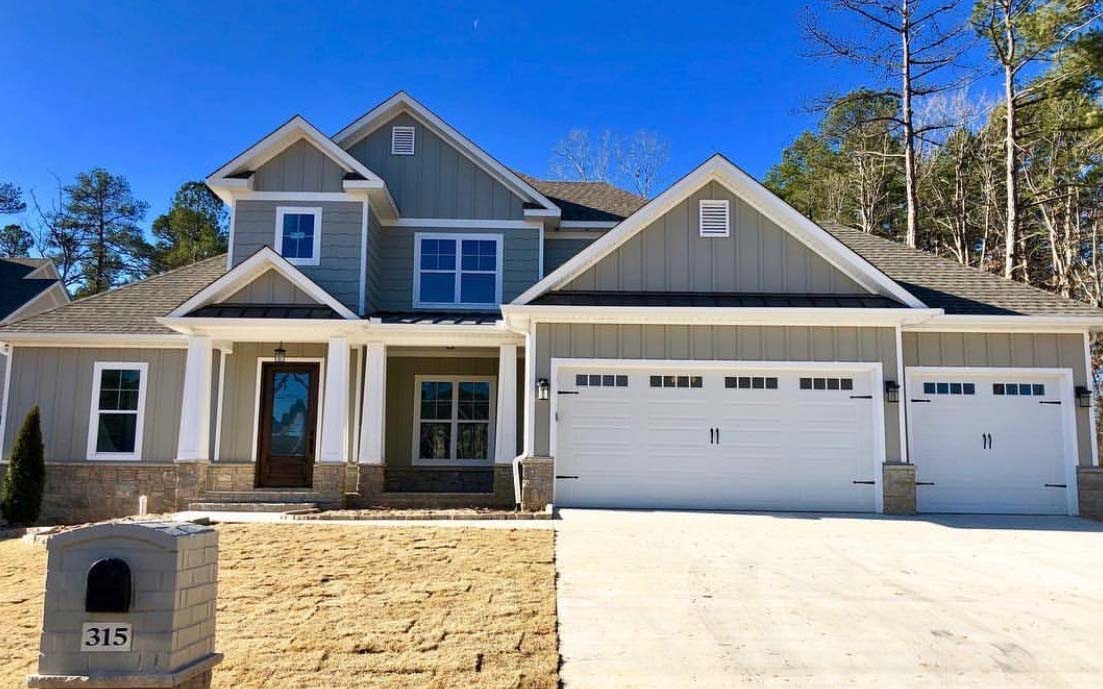Arkansas, U.S. homebuilders say pandemic-aided lumber prices endanger housing construction, renovation projects
June 7-13, 2021
By Wesley Brown
While local mills in South Arkansas are now humming with activity as lumber prices have touched historic highs in recent weeks, home builders nationwide are sounding the alarm that rising costs threaten to cool the hot housing market.
Although prices have declined substantially since peaking at $1,733.50 per 1,000 board feet on the Chicago Mercantile Exchange on May 10, they are still three times higher than a year ago when the coronavirus pandemic brought demand to a screeching halt. In fact, lumber prices were a hot topic during the Home Builders Association of Greater Little Rock’s 69th Annual Home Show on May 22–23 at the Statehouse Convention Center, one of the first in-person convention events in the city since COVID-19 was declared a global pandemic in March 2020.
Heading into this year’s annual event, HBAGLR forecasted that demand for new housing and renovation projects in 2021 would remain high across Central Arkansas despite pandemic related supply chain disruptions and rising construction costs. Fueled by record low mortgage rates, pent up demand and home improvement projects inspired by yearlong shelter-in-place mandates, HBAGLR said home building projects rebounded quickly after initially stalling in March 2020 and now area home builders are working with Arkansans to successfully navigate the current home construction landscape.
“The spike in demand coupled with pandemic related disruptions to lumber and other industries have introduced new challenges for people trying to build a home right now, but they’re still ready to build and our home builders are there to support them,” said Daniel Menden of Menco Construction, chair of the Central Arkansas home builder’s group. “Primarily we’re working with people to understand what’s happening in the industry and plan ahead right now. If it’s going to take six-to-eight weeks longer to get windows and doors in, we know that now. That means we can plan for it ahead of time and minimize any delays in their projects later on.”
In Central Arkansas, HBAGLR is part of the Arkansas Home Builders Association, which has over 2,000 statewide members and 17 local chapters representing the residential construction and development industry. Both are also part of NAHB, the powerful Washington, D.C.-based trade group that represents over 200,000 members and is one of the largest professional trade organizations in the world.
After plummeting to a low of 30 out of 100 at the beginning of the COVID-19 pandemic, the Housing Market Index (HMI) produced by the NAHB and Wells Fargo spiked to a generational high of 90 in November 2020. HMI measures home builder sentiment on the present and near-term housing market. The national index remained high at 83 out of 100 for April 2021, making the past six months the strongest period for the HMI in 35 years. As of January, building permits in the Little Rock, North Little Rock and Conway region were up 17% from that time the previous year.
“Home building has been steadily coming back and growing since the 2008 financial crisis, but these past months have been some of the busiest many of our Central Arkansas home builders have seen,” said Menden, owner of a family-operated construction firm in North Little Rock. “And even with all the changes in the market it’s still a fantastic time to build before we see any significant change in monetary policy at the federal level that changes the record low mortgage rates we see right now.”
NAHB, Biden administration plan “lumber summit”
Still, concerns about inflated prices for lumber and other building materials has caused NAHB and other construction and housing industry trade groups to appeal to the Biden administration to shore up current trade and tariff agreements. During a meeting with NAHB CEO Jerry Howard and other top association officials ahead of the Memorial Day weekend, Commerce Secretary Gina Raimondo acknowledged the broad impacts of skyrocketing lumber prices.
Raimondo, who has been in her post for less than three months, also promised to hold an upcoming “lumber summit” to discuss the impact of the lumber price crisis and its effects on the residential construction industry, home buyers, and renters.
“The residential construction industry is facing serious challenges because of supply chain constraints and the impact on home building, especially with respect to affordable housing. (This) was a productive, positive conversation to begin to address these challenges,” said Raimondo.
“We take these issues seriously, and my staff and I are committed to continuing to work with all stakeholders, including reviewing relevant data and conducting analysis to identify targeted actions the government or industry can take to address supply chain constraints. I want to thank the NAHB and its leaders for constructive engagement on this issue and working with us to find a path forward,” said the Commerce Secretary.
In a blog post on the NABH website, the association’s Chairman Chuck Fowke said now understands that high lumber costs are adding tens of thousands of dollars to the price of a new home. “She heard our stories and acknowledged that she is concerned – and that President Biden is concerned – about the effect of the lumber price problem on the broader economy,” said Fowke.
The Memorial Day weekend meeting with Raimondo occurred only a week after Fowke lambasted the Commerce Department’s preliminary plans to double lumber tariffs on Canadian lumber shipments into the U.S from 9% to 18.32%. The NAHB chief said lumber prices are already up more than 300% from a year ago.
“(If) the administration’s decision to double tariffs is allowed to go into effect it will further exacerbate the nation’s housing affordability crisis, put even more upward pressure on the price of lumber and force millions of U.S. home buyers and lumber consumers to foot the bill for this ill-conceived protectionist action,” he said.
NAHB First Vice Chairman Jerry Konter also summarized there is still “a disconnect between lumber supply and housing demand.” He said U.S. sawmill output increased 3.3% in 2020, but over the same period, single-family construction increased 12% to almost 1 million housing starts, and the remodeling market expanded 7%.
“We feel this mismatch between domestic production and rising demand for building materials is at the root of the unsustainable increases in lumber prices,” said Konter.
Current prices according to the Random Lengths Framing Lumber Composite Index – the industry benchmark – have more than quadrupled since April 2020 to more than $1,500 per thousand board feet. NABH analysis shows that lumber prices alone are adding nearly $36,000 to the price of a new home and nearly $13,000 to the price of a multifamily home, pricing millions of middle-class households out of the market at a level they previously could afford.
Although the housing sector continues to be a leader in the nation’s economic recovery, NABH said these sharp price increases in the residential housing market threaten housing affordability for all Americans.
On the other hand, Associated General Contractors of America on June 1 reported that nonresidential construction spending in April declined for the fifth-straight month to a two-year low as demand waned for numerous public and private project categories in the face of lengthening production and delivery times for materials, along with fast-rising prices for many items. Like the NABH, construction industry officials are also urging the Biden administration and Congress to boost infrastructure investments, remove tariffs on key materials and take steps to address production and deliver backups for key construction supplies.
“Both public and private nonresidential spending overall continued to shrink in April, despite a pickup in a few spending categories from March,” said AGCA Chief Economist Ken Simonson. “Ever-growing delays and uncertainty regarding backlogs and delivery times for key materials, as well as shortages and record prices, are likely to make even more project owners hesitant to commit to new work.”
AGCA officials also cautioned that a recent Commerce Department announcement that it intends to double the current tariff levels on Canadian lumber would further undermine nonresidential construction activity. Stephen Sandherr, the association’s chief executive officer, said the Biden administration should instead remove tariffs on lumber, steel and aluminum and work to ease production and shipping delays. Boosting infrastructure funding, which leaders of both parties have proposed, will also help, he said.
“The last thing construction workers need is for the Biden administration to double tariffs on lumber,” said Sandherr. “Instead of making it even harder to build, the administration needs to ease supply backups, remove tariffs and pass a bipartisan infrastructure bill.”
Arkansas timber industry’s 2021 rebound
Despite the alarm from the residential and construction lobby, the nation’s domestic timber industry has rebounded from the COVID-19-induced downturn in 2021 as robust lumber prices have revived sawmill activity to keep up with demand from homebuilders. Known as the heart of the nation’s wood basket, Central and South Arkansas are now booming with activity as home to the third largest industry.
One of the private landowners that have benefitted from the lumber price boom is PotlatchDeltic Corp., the Spokane, Wash.-based Real Estate Investment Trust (REIT) that acquired El Dorado-based Deltic Timber for $3.3 billion deal just over three years ago. Today, PotlatchDeltic still retains a satellite office in El Dorado and has more than 1,500 employees and 200 customers through operations across its extensive timberland and lumber manufacturing portfolio.
Nationwide, PotlatchDeltic oversees nearly 2 million acres of timberland, with approximately 1.1 million acres in the U.S. South, including Alabama, Arkansas, Louisiana, and Mississippi. In Arkansas, the company owns 933,000 acres of forestland and is the second large private landowner in the state. Through its taxable REIT subsidiary, PotlatchDeltic also operates six sawmills and an industrial-grade plywood mill. Timber harvested in Arkansas lands is sold to PotlatchDeltic mills in Warren, Waldo, and Ola and to other area lumber and paper manufacturers, company officials said.
In the company’s first quarter earnings report, the West Coast timberland REIT posted profits of $131.1 million on strong revenues of $354.2 million. That is a marked improvement from net loss of $16.8 million on revenues of only $208.9 million heading into the COVID-19 pandemic a year ago.
PotlatchDeltic President and CEO Eric Cremers boasted that the strong first quarter results generated record earnings in the company’s Wood Products and Timberland division, while also increasing cash flow to $761.1 million. That excess liquidity also caused the Potlatch board of directors to pay out 41 cents per share to stockholders of record on June 4. In 2021, the company’s stock has jumped nearly 23% from $50.02 to $61.42 at the close of business on June 2.
“2021 is off to an extraordinary start as our Wood Products and Timberlands businesses leveraged historic lumber prices to drive our third consecutive quarter of record financial performance,” said Cremers. “Our real estate business also delivered strong results by capitalizing on robust rural and development demand. We expect housing fundamentals and lumber demand will remain strong. Our strong liquidity and disciplined capital allocation strategy positions us to continue increasing shareholder value.”
PotlatchDeltic also still owns and operates the company’s Chenal Valley and Red Oak Ridge master planned communities in Arkansas. Located in West Little Rock, Chenal Valley Chenal Valley is a 4,800-acre planned community anchored by the Chenal Country Club. The upscale development offers over 35 distinct neighborhoods.
Today the community is approximately 65% sold and captures a significant share of the local housing demand, company officials said. Red Oak Ridge is an exclusive, 800-acre gated community set in Hot Springs that offers estate-sized residences and garden-home living, along with a selection of wooded homesites.
Over 350 acres in Chenal Valley are designated for commercial uses, anchored by anchored the Promenade at Chenal, a 306,000 square foot open-air lifestyle shopping center. Nearby commercial uses include the St. Vincent medical complex, several medical offices, Bank OZK’s new $98 million headquarters, multifamily and senior living properties, retail stores and hotels.
In the first quarter, Potlatch said it sold 7,083 acres of rural land at $1,415 per acre and eleven commercial acres for $277,000 per acre. During the same period, 51 residential lots were at an average $99,000. Company officials said.
PHOTO CAPTIONS:
1. and 2. The National Association of Home Builders says the unprecedented spikes in lumber prices have added nearly $36,000 to the average cost
of a new single-family home. (Photos provided by Menco Construction of North Little Rock.)
3. The National Home Builders Association recently warned that lumber prices peaked at $1,733.50 per board feet in early May, quadrupling similar building costs a year ago. (Photo by Dustin Hennard of Hennard Custom Homes.)
4. E. Ward Construction recently completed work on a new custom home in Little Rock, where low mortgage rates and pent-up demand continue to fuel new housing construction locally. (Photo provided by E. Ward Construction).






